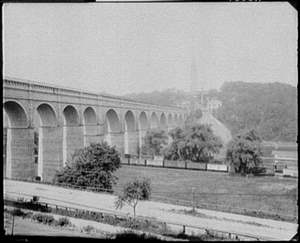 |
Climbing Walls & Other Animals | ||
| Artificial Climbing Structures: Climbing Walls: Climbing Gyms: Bouldering Walls: Lead Climbing Walls: Traversing Walls: Boulders: Mobile Walls: | |||
| HOME: ABOUT US: CLIMBING WALL DIRECTORY FOR SAT NAV - TOPOS FOR CLIMBING WALLS: CONTACT | Contact Us | ||
TOPICS
|
|
|||
Not truly a rock climbing or bildering story, but a gem of a story waiting to be told and of an obviously popular local Bildering venue before Climbing, Free Running or Parkcour had any popularity. So who is our Bilderer. Arthur was born Arthur Byrne Pinner on 18th September 1898 in New York. His father Louis Pinner was from Polish and German parents and his mother Nellie was from English and Irish parents. In 1910 he lived with his parents at 503 West 178th Street, in the Bronx of New York. Pearl - A Grandmother's Stories By Pearl Adels Loeb a book of her memories growing up in New York and published by her grandson mentions him very briefly, in 1910 or 1911 we moved to a first floor apartment in the "elevator apartment house" at 523 West 187th Street,44 at the corner of St. Nicholas Avenue...I remember my first love affair. The Sunday school had a Purim play when I was ten years old. I was Queen Esther and my mother made a lovely costume for me out of white cheesecloth. The sash and crown were made of silver paper, and my jeweled necklace, which I hung around my neck, was a chain cut and made from the same silver paper. Of course, the cheesecloth stuck to my under-dress, but everyone thought I looked great (including me). Arthur Pinner played the king. He was a really handsome boy, who said he really liked me. The only trouble was that he was not as tall as I was, so the romance soon ended.
More on the Highbridge Park Bridge and The Speedway please read on. Highbridge Park is located in Washington Heights on the banks of the Harlem River near the northernmost tip of the New York City borough of Manhattan, between 155th Street and Dyckman Street. The park is operated and maintained by the New York City Department of Parks and Recreation. It was once an urban oasis on the order of Central Park, but delayed up keep following the closure of the High Bridge has caused thePage Acknowledgements and References: New York Times
Gary Thornhill. |
||||
|
Material on
this site is all rights reserved -This is a non-commercial, historical
and hopefully educational website. No part of this site may be
reproduced, stored in a retrieval system, or transmitted in any form or
by any means without prior consent. |
||||
